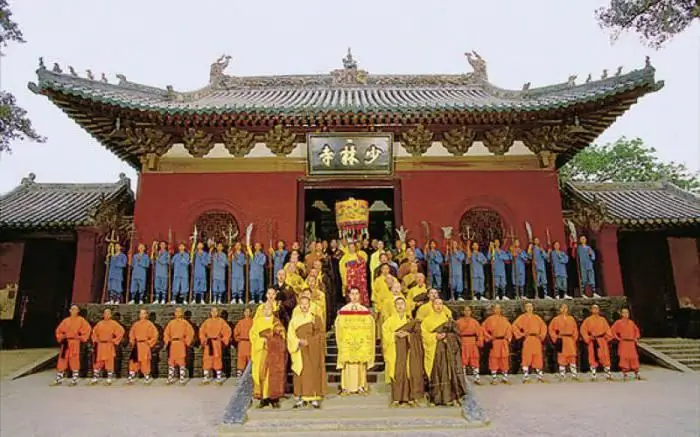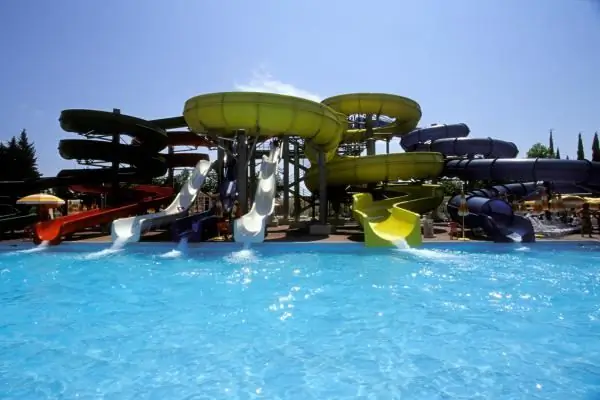- Author Harold Hamphrey [email protected].
- Public 2023-12-17 10:06.
- Last modified 2025-01-24 11:10.
The city of Yokohama, with a population of about 3.5 million, is the second largest city in Japan. It is also the second largest port in the country. It so happened that the city became Japan's gateway to the world. Located on the seafront, surrounded by magnificent parks, the city has many historical sites and beautiful high-rise buildings.
From the history of the city of Yokohama
Yokohama's population is currently diverse, but this has not always been the case. In 1859 the city was opened to foreign trade. Prior to that, only the Japanese lived in Japan for three centuries of self-isolation. The result of lengthy negotiations between the Japanese government and the governments of America, England, and Russia was permission for foreign ships to enter the port of Yokohama.

Yokohama was once an ordinary fishing village, but turned into a city after the signing of a trade agreement ("Harris Treaty"). The treaty referred to Kanagawa, not Yokohama, as a port belonging to Tokyo. Kanagawa City was on the Tokaido Highway, the main thoroughfare between Kyoto and Edo, and thereforeperfect for a quick connection. Yokohama was a few miles from Tokaido and had only one access road, making it easier to control all trade with the rest of Japan. That is, it was a fait accompli that a remote fishing village found its place in the infrastructure of Japan in this way.
Geographic coordinates of the city of Yokohama
Latitude: 35°25'59″ N
Longitude: 139°39'00″ E e. Altitude: 21 m.
The main attractions of Yokohama are the Motomachi shopping area, Chinatown and Yamashita Park. They are easily accessible from Tokyo Shibuya Station on the Minatomirai Line, which connects directly to the Tokyu Toyoko Line.
Minato Mirai District
Tourists coming to the city pay their attention more to new buildings than to historical monuments. The grand territory of the harbor is the area of Minato Mirai ("Port of the Future"). Many buildings in the area are not yet completed, but the tallest skyscraper in the city of Yokohama in Japan rises in the port.

It has an original architecture and is a symbol of the city - this is the Landmark Tower, the construction of which was completed in 1993. On the top floors of the skyscraper is the Yokohama Royal Park Hotel with magnificent views of the harbor and a public gallery for viewing the Sky Garden ("Sky Garden") on the 69th floor. From this height, the city and surroundings of Yokohama, the Boso Peninsula and Tokyo Bay are perfectly visible. The elevator located on this building is the fastest in the world, it is listed in the bookGuinness World Records.
City attractions
In Yokohama, the beautiful Yokohama Grand Intercontinental Hotel, built in the form of a semicircle, can also be attributed to modern buildings. Cosmo Clock operates in this area. The Big Ferris wheel, one of the largest in the world. Its height is 112.5 meters, the passenger capacity is 480 people. From the height of this wheel, you can see an amazingly beautiful bridge, having a length of 860 meters, connecting the piers of Hommoku and Daikoku. It was opened in 1989. This unique bridge is one of the longest in the world.
Sankeien Garden is one of the main attractions of the Japanese city of Yokohama. In the photo below, the old Yanohar house, located in the garden.

Sankeien Garden was built by silk merchant Sankei Hara and contains a number of historical buildings and artifacts brought from other parts of Japan. Indoor garden includes:
- Rinshunkaku mansion built for Shogun's son Tokugawa Ieyasu in 1649;
- an elegant teahouse that once stood in Nijo Castle in Kyoto;
- Kaiganmon Gate from Saihoji Temple in Kyoto;
- Tenju-in is a 17th century Zen temple dedicated to Jizō brought from Kamakura.
Main Attractions of the Outer Garden:
- Yanohar's big old house, built in the style of gassu architecture;
- Three-storied Muromachi-era pagoda;
- main hall of Old Tomoji Temple.
Sankeyen Garden is open from 9 am to 5 pm every day.
International StadiumYokohama is located north of the station and has a capacity of over 77,000, making it the largest in Japan. It hosted the World Cup final in 2002.
Yokohama Museums
Yokohama has many interesting museums and galleries, many of which are related to the history of the city. For example, the vibrant Yokohama Art Museum, designed in Kenzo Tange near the Oryx Tower, focuses on art created after 1859, the year Yokohama was founded. It is well known for its exhibitions of surrealism and contemporary art.

The Yokohama City History Museum focuses on the building period of the modern city. Next to it is the Museum of Jewish Culture, which exhibits Yokohama crafts, clothing and sculpture.
The Yokohama Doll Museum at the southeast end of Yamashita-ken, across from Harbor Park, displays 1,000 dolls from around the world, including an excellent collection of Japanese China dolls. The first newspapers in Japan originated in Yokohama, and the history of the Japanese press is presented at the Japan Newspaper Museum, located in the Yamashita Park area in the city.
Yokohama is associated with silk, which was exported to the West. One of the rarest museums in the world is the Silk Museum, which presents an extensive exposition of silk products. The first floor of the museum introduces visitors to the process of silk production, and the second floor is completely provided for the exhibition telling about the history of silk products in Japan.

Unique museumsJapan
The Japan Overseas Migration Museum is located on Shinko Island and traces the history of Japanese migration mainly to North and South America. Nearby is the Japan Coast Guard Museum, which details the work of the Japan Coast Guard (JCG) and displays a North Korean spy vessel that the Coast Guard sank in 2001. It was later moved here. Both the Japanese Overseas Immigrant Museum and the Japanese Coast Guard Museum are open to the public.
The Yokohama Tram Museum, located south of Kannai, displays some of the street cars that have been running in Yokohama for seventy years, along with models, photos and posters.

Parks of Yokohama
The Motomachi Yamate area in Yokohama, south of Kannai, is the southern part of the historic foreign settlement. The centerpiece of Motomachi-Yamate is Yamate Park, the first Western-style park in Japan, established in 1870. It was here that the first cedars in Japan were planted. And in 1930, Motomachi Park was opened. Its territory is 20,000 sq. m. The park is especially beautiful in early April, when cherry blossoms. There are about 100 different species in the park.
You can't say that Yokohama is a forest city, but there is such a park in the city. This is Negishi Park. Horse racing is held in this park. There is a museum of ponies and horses in Negishi Park, which is open to the public. Here you can ride a pony and horses in the park. In the beautiful Hommoku Shimin Public Park, visitors will be taken toChinese garden and lawn. It has bike lanes.
Yokohama is a modern metropolis that has a lot to see, where to have fun and where to relax.






